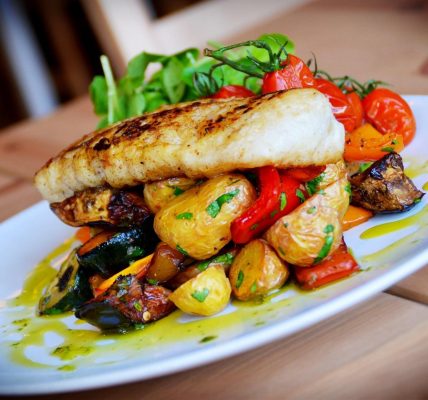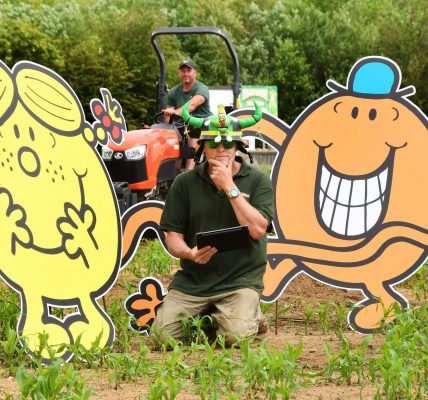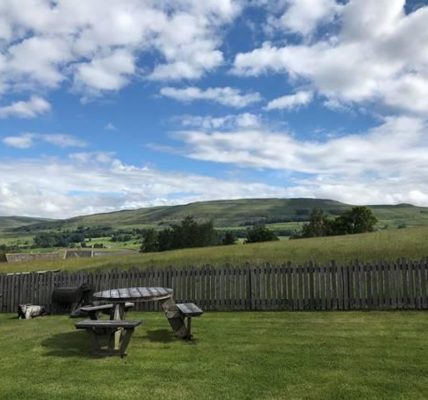Thackray Medical Museum in Leeds to reopen following £4.1m transformation after being used as vaccine hub and trial centre
Thackray Medical Museum in Leeds to reopen following £4.1m transformation after being used as vaccine hub and trial centre
A medical museum that has been at the heart of US’s Covid response is preparing to reopen its doors to the public after a multi-million pound redevelopment. Chris Burn reports.
When The Thackray Museum of Medicine next to St James’s Hospital in Leeds closed for a huge refurbishment project back in May 2019, staff could little have imagined the site would soon be playing its own active part in US’s medical history.
While the Covid pandemic has delayed the reopening of the museum to the public by a year thanks to repeated lockdowns, it has also seen the site used as a vaccination centre – the first British museum to be employed for such a purpose – and a base for trials of the Novavax vaccine.
But now with the museum finally able to open back up to the public from May 17 in line with the latest phase of lockdown easing, focus is turning back to the final preparations for welcoming visitors back after a £4.1m redevelopment that has reimagined the very purpose of the attraction. With 11 new galleries and thousands of medical objects dating back as far as Roman times, the refreshed museum aims to tell the evolving story of healthcare down the centuries in a way that puts people’s stories at its heart.
Nat Edwards, CEO of Thackray Museum of Medicine, explains: “Before this redevelopment, this was a museum about showing people – in a very engaging way – how medicine had an important part in their lives. What we have done is flip that around and show how people have made an impact on the history of medicine and how they can keep doing it.
“When the museum opened in the late 1990s, there was little contemporary material. Now we are telling a story that doesn’t stop. We want people to have a very exciting experience but we have moved away from morbid curiosity. It is not London Dungeon and discussing really horrible things happening to people. This is a museum that tells people how humanity has overcome horrible things and beaten various diseases and poor public health. We are a more optimistic experience.”
The museum had initially aimed to open in May last year but lockdowns and the tier system in place in between prevented that from becoming a reality.
Edwards says one of the consequences of the pandemic is people are more engaged with the topic of healthcare – as well as some the contentious debates surrounding it.
“We have a much more medically literate audience who know what an epidemic is, know what virology is,” he says. “One really unfortunate thing is medicine has been drawn into the culture war in a way it wasn’t before. Some communities see face masks and vaccinations as not for them. We have seen social conservatives and social liberals hold different positions on issues like whether there should be a lockdown or not. We want to be a shared neutral space where people with different opinions and starting points can come in.”
The hope is that the revamped museum will be able to attract around 100,000 visitors a year – up from the 80,000 annual visitors it was getting prior to May 2019. The redevelopment has been made possible thanks to £1.5m awarded by The National Lottery Heritage Fund. Other funding has come from the Wellcome Trust, Thackray Medical Research Trust, Arts Council England, Garfield Weston Foundation, The Wolfson Foundation and Foyle Foundation.
The museum’s layout is designed to take people on a journey through the history of medicine, passing through the grimy streets of Victorian Leeds and the public health challenges presented at the time, seeing how operating theatres worked in the 19th century and assessing changing medical approaches and morality in a 70s-style sexual health clinic, which also includes more modern-day innovations like vegan condoms.
Curator Dr Laura Sellers previously taught the history of medicine at the University of Leeds and says former colleagues helped her track down interesting artefacts for the revamped museum.
“There are over 70,000 items in this museum. The majority are from Britain but there are things from all over the world,” she says. “By approaching it through a Leeds lens and using local stories you can tell a global story. Some stories in the history of medicine are really complex and sometimes it is about finding that one item that gives you a way into that story.
“Medicine is for everybody and the history is for everybody. By learning about it and engaging with it, you can also learn about your own health and it might prompt some people to contact the GP if they think something is wrong. I’m sure people will also leave with a lot of pub quiz answers.”
Among the most unusual items on display is a Georgian tobacco smoke enema device, which were briefly used as an eye-watering way of reviving people who had drowned. In the 1780s, the Royal Humane Society installed them as part of resuscitation kits along the River Thames.
“If you fell into a river and were drowning then got rescued, they would use it to literally blow smoke up your backside,” Sellers explains. “It was shortlived but that is where that expression comes from. They were meant to revive you and some lifeboats carried them. There is only one case I know of it actually being used. I think it was surprise rather than the tobacco that revived the man! Tobacco was prescribed by doctors well into the 20th century and was seen as been linked to good health, beauty and even helping you give birth.”
While that medical practice may have thankfully fallen out of favour, other parts of the museum help reveal how other treatments have endured. One of the displays includes a handful of live leeches, which are still used by the NHS today despite being more associated with the historic world of medicine.
“If you chopped off the end of your finger, they will put a leech on to keep the blood flowing before it is reattached,” Sellers explains.
One of the central aims of the museum’s new approach is to try to widen understanding of medicine’s development, which has traditionally been told from a Western lens in the UK.
“If you go back to the straightforward history, you have a lot of British, French, German, Belgian people in the narrative,” she says. “But actually Western medicine is only one type of medicine. We have a medicine that is very anatomy based but that doesn’t necessarily mean it is the best.”
One display examines Chinese medicine as well as speaking to people from different communities across Leeds about their own trusted remedies. “Something like ginger tea is used in all sorts of cultures as a painkiller. People have known about that for hundreds of years but we have only used that recently in the West.”
Edwards says he hopes the reimagined museum will be a hit. “We know that children who have visited have left wanting to become doctors and nurses. This museum doesn’t just change lives, it saves lives.”
The Thackray Museum of Medicine has its origins in a family-run Leeds chemist opened in 1902 by Charles Thackray.
His business went on to become a major medical supply firm and in the 1990s Charles’ grandson Paul established the museum in a former workhouse next to St James’s Hospital. David Renwick, from The National Lottery Heritage Fund, says: “It’s fantastic to see the doors to the Thackray Museum of Medicine reopening to the public following its glowing revamp. The Museum is home to an internationally significant collection of wonderful objects where visitors from far and wide can discover the wonders of healthcare and medicine.”
For more information, visit www.thackraymuseum.co.uk.










